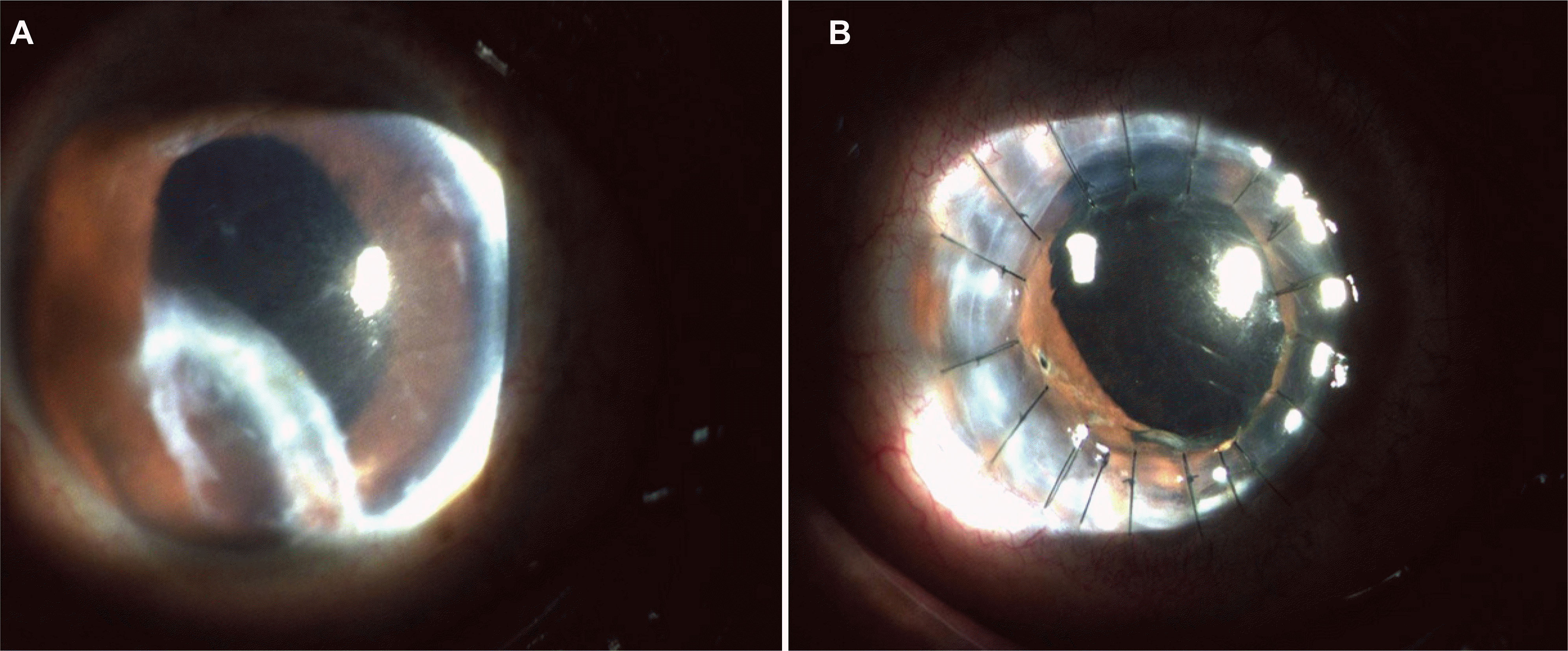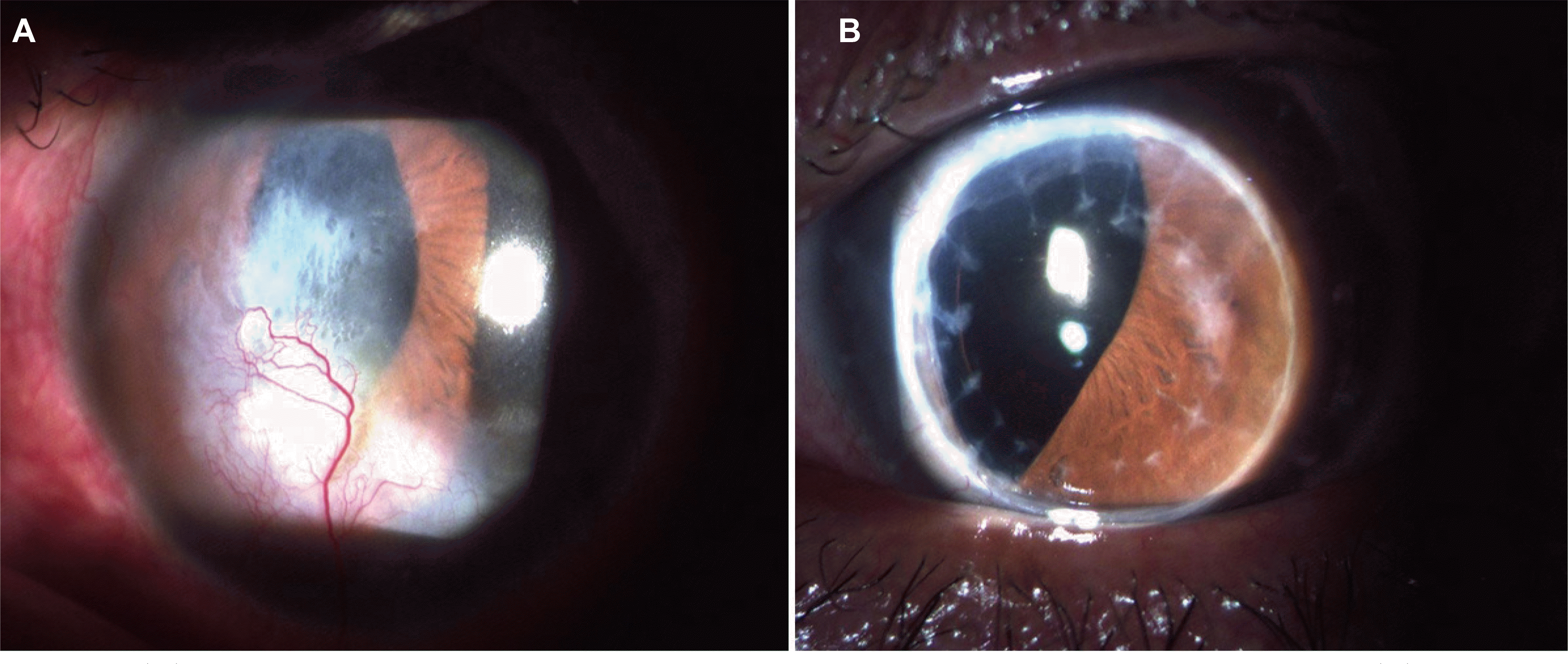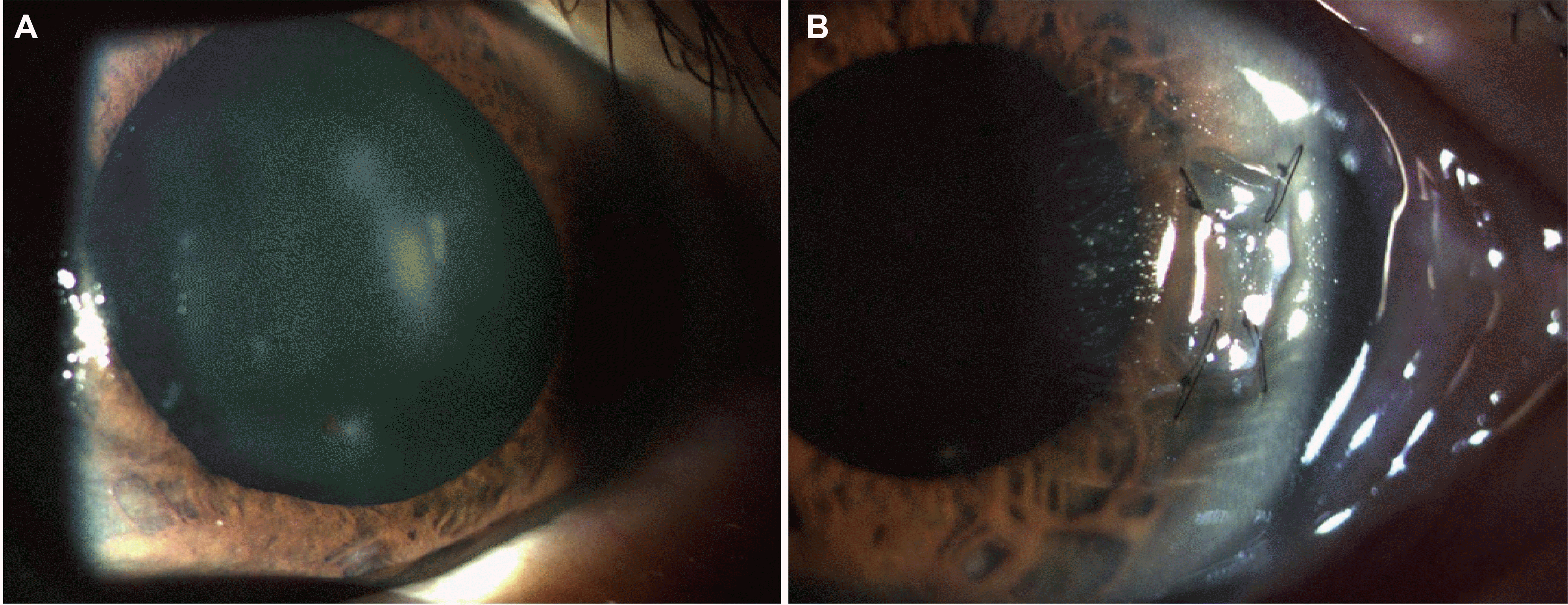Abstract
Purpose
To report cases of transplanting a donor's 2 corneas to 5 patients suffering from several corneal diseases.
Case summary
Two corneas were donated from a 66-year-old donor, who suffered from brain damage due to asphyxia, one hour after being pronounced dead by doctors. Two penetrating keratoplasties and 3 partial lamellar keratoplasties were performed for patients with corneal opacity, corneal ulcer and corneal perforation. After the procedure all grafts were stable.
Conclusions
Under the present circumstances of decreasing donations of corneas after death and the increasing demand for keratoplasty in Korea, the mutual cooperation among hospitals to treat more than one patient using one donated cornea is a method the authors believe can alleviate this situation.
Go to : 
References
1. Barron BA, Penetrating keratoplasty. The Cornea. 2nd ed.New York: Churchill Livingstone Inc;1998. p. 805–10.
2. Choi SH, Lee YW, Kim HM, et al. Epidemiologic studies of keratoplasty in Korea. J Korean Ophthalmol Soc. 2006; 47:538–547.
3. Terry MA, Ousley PJ. Small incision deep lamella endothelial keratoplasty. six-month results in the first prospective clinical study. Cornea. 2005; 24:59–65.
4. Melles GR, Eggink FA, Launder F, et al. A surgical technique for posterior lamella keratoplasty. Cornea. 1998; 17:618–25.
5. Terry MA, Ousley PJ. Endothelial replacement without surface corneal incisions or sutures. Cornea. 2001; 20:14–8.

6. Terry MA, Ousley PJ. Deep lamella endothelial keratoplasty in the first United States patients. Cornea. 2001; 20:239–43.
7. Uhm SL, Chung SK, Myung YW, Rhee SW. Clinical analysis of keratoplasty over a 23 year-time span. J Korean Ophthalmol Soc. 1991; 32:421–9.
8. Ha DW, Kim CK, Lee SE, et al. Penetrating keratoplasty results in 275 cases. J Korean Ophthalmol Soc. 2001; 42:20–29.
9. Eye bank association of America. 2002 eye banking statistical report. Washington, DC: Eye Bank Association of America;2003.
Go to : 
 | Figure 1.(A) Corneal opacity with stromal neovascularization was seen before penetrating keratoplasty by slit lamp examination. (B) Four months after a penetrating keratoplasty, graft tissue was clear and had no rejection sign. |
 | Figure 2.(A) Opaque and bullous cornea with neovascularization is seen by slit lamp examination. (B) One year after a penetrating keratoplasty, graft tissue was clear and had no rejection sign. |
 | Figure 3.(A) Aqueous leakage developed due to loose suture knots. (B) Loose sutures were removed and Histoacryl® glue was applied. (C) After a Histoacryl® glue removal, a partial superficial lamellar keratoplasty was performed. (D) Six months later, graft tissue was stable and central cornea was clear to see 20/20. |




 PDF
PDF ePub
ePub Citation
Citation Print
Print




 XML Download
XML Download